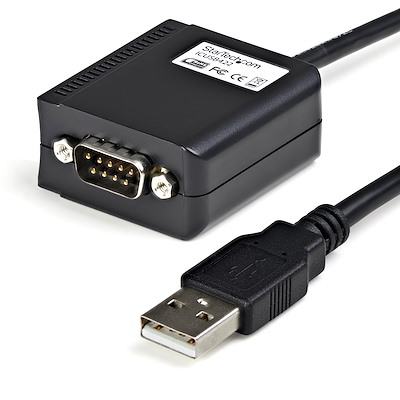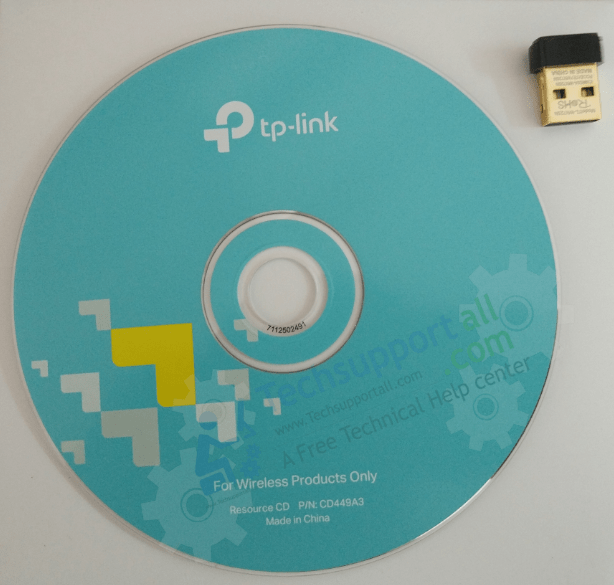Usb-com Driver Others Driver Download
- Usb-com Driver Others Driver Download Windows 10
- Usb-com Driver Others Driver Download Torrent
- Usb-com Driver Others Driver Download Windows 7
To use this site to find and download updates, you need to change your security settings to allow ActiveX controls and active scripting. To get updates but allow your security settings to continue blocking potentially harmful ActiveX controls and scripting from other sites, make this site a trusted website. USB Driver Downloads and Updates for Windows 10, Windows 8, Windows 7, XP & Vista - Update USB Drivers for your PC - Trusted Driver Support from Drivers.com.
-->Describes the architecture of the USB function stack.
On a USB device, the USB function stack refers to a group of drivers that are enumerated by the Plug and Play Manager, when ACPI creates a USB device physical device object (PDO).
In a single configuration device, a USB device can define one or more interfaces. For example, the Media Transfer Protocol (MTP) for transferring files to and from the device. A composite USB device can support multiple interfaces in a single configuration. The USB function stack creates PDOs for each interface and PnP Manager loads the class driver that creates the function device object (FDO) for that interface.
The USB function stack is conceptualized in this image:
Applications and Services
- All user-mode requests are sent to the Microsoft-provided kernel-mode class driver GenericUSBFn.sys. You can create a user-mode service that communicates with GenericUSBFn.sys by sending I/O control codes (IOCTLs) as defined in genericusbfnioctl.h. For more information about these IOCTLs see Communicating with GenericUSBFn.sys from a user-mode service
USB function class driver
A USB function class driver implements the functionality of a specific interface (or group of interfaces) on the USB device. MTP and IpOverUsb are examples of system-supplied class drivers. The class driver may be implemented purely as a kernel-mode driver, or it may be a user-mode service paired with the system-supplied class driver GenericUSBFn.sys.
A function class driver sends requests to the controller by using USB function class driver to UFX programming interfaces.
USB function class extension (UFX)
The USB function class extension (UFX) is a system-supplied extension to Kernel-Mode Driver Framework (KMDF). USB is a standard bus and has some required functionality and capabilities. UFX is responsible for implementing USB function logic that is common to all USB function controllers and handling and/or dispatching requests from USB function class drivers. In particular, UFX handles the process of enumerating the device and processing standard control transfers. To perform some of these operations, UFX needs to know about the capabilities of the bus. Those capabilities are reported to UFX when the class-extension interface is established.
UFX exposes standard IOCTLs that the upper layers (USB function class driver and user mode services) can use to send requests to the controller. Additionally, UFX notify upper layers about the standard requests received from the host.
USB function client driver

UFX provides an abstracted interface that works consistently across different controllers. However, controllers have different capabilities, with limitations such as the number of endpoints, the types of endpoints, low power, remote wake-up. For example, certain controllers support DMA, while others do not. Some controllers implement streams in the hardware while other controllers expect the driver to handle streams. For these reasons, only common functionality is handled in UFX. Transfers, power management, stream support, and other features which vary from controller to controller are handled by the client driver.
The USB function client driver is responsible for implementing controller-specific operations. These include implementing endpoint data transfers, USB device state changes (reset, suspend, resume), attach/detach detection, port/charger detection. The client driver is also responsible for handling power management, and PnP events.
The function client driver is written as Kernel-Mode Driver Framework (KMDF) driver by using USB function class driver to UFX programming interfaces.
Microsoft provides in-box function client drivers (UfxChipidea.sys, Ufxsynopsys.sys) for ChipIdea and Synopsys controllers.
USB lower filter driver
A USB lower filter driver supports detection of chargers if the function controller uses the in-box Synopsys and ChipIdea drivers. The filter driver manages USB charging starting from USB port detection. t must publish a GUID for each charger type it supports, and a list of that charger’s properties. If a specific charger is configurable, the lower USB filter driver defines a list of supported PropertyIDs and their corresponding value types that can be sent to it, to configure the charger. The driver also notifies the battery stack when it can begin charging and the maximum amount of current the device can draw. For client drivers other than Synopsys and ChipIdea drivers, charging logic can be implemented in the client driver.
A function class driver sends request to UFX by using Programming interfaces for supporting proprietary chargers.
Related topics
-->This topic contains information about earlier versions of the Windows Driver Kit (WDK),Enterprise WDK (EWDK), and additional downloads for support purposes. To develop drivers,use the latest public versions of the Windows Driver Kit (WDK) and tools, available fordownload on Download the Windows Driver Kit (WDK).
The Windows Driver Kit (WDK) is used to develop, test, and deployWindows drivers. To develop drivers, use the latest public versions ofthe Windows Driver Kit (WDK) and tools, available for download onDownload the Windows Driver Kit (WDK).
This topic contains information about earlier versions of the WDK, theEnterprise WDK (EWDK), and additional downloads for support purposes. Touse these earlier versions, you must first install the version ofVisual Studio that is appropriate for your targeted platform.
Runtime requirements
You can run the Windows 10, version 1903 WDK on Windows 7 and later, and use it to develop drivers for these operating systems:

| Client OS | Server OS |
|---|---|
| Windows 10 | Windows Server 2019, Windows Server 2016 |
| Windows 8.1 | Windows Server 2012 R2 |
| Windows 8 | Windows Server 2012 |
| Windows 7 | Windows Server 2008 R2 SP1 |
Step 1: Install Visual Studio
The WDK requires Visual Studio. For more information about system requirements for Visual Studio, see Visual Studio 2019 System Requirements.
The following table indicates which Visual Studio version is required for the different releases of the WDK.
| Targeted versions of Windows | Edition(s) of Visual Studio |
|---|---|
| Windows 10, version 1903 | Visual Studio Community 2019 Visual Studio Professional 2019 Visual Studio Enterprise 2019 |
| Windows 10, version 1809 Windows 10, version 1803 Windows 10, version 1709 | Visual Studio Community 2017 Visual Studio Professional 2017 Visual Studio Enterprise 2017 |
| Windows 10, version 1703 Windows 10, version 1607 | Visual Studio Express 2015 for Desktop Visual Studio Community 2015 Visual Studio Professional 2015 Visual Studio Enterprise 2015 |
| Windows 8.1 Update Windows 8.1 | Visual Studio 2013 |
| Windows 8 | Visual Studio Professional 2012 Visual Studio Ultimate 2012 |
Configure Visual Studio for Windows 10, versions 1709, 1803, 1809 and 1903
When you install Visual Studio, select the Desktop development withC++ workload. The Windows 10 Software Development Kit (SDK) isautomatically included and is displayed in the right-hand Summarypane.
To develop drivers for ARM/ARM64, choose Individual components andunder Compilers, build tools, and runtimes select Visual C++compilers and libraries for ARM/ARM64.
Install the Windows SDK to target Windows 10, versions 1607 and 1703
If your development targets systems that run Windows 10, version 1607 or Windows 10, version 1703, you should install Visual Studio 2015, and then also download and install the version of the Windows SDK for the targeted version of Windows 10, as identified in the following table.
| Targeted versions of Windows | Version of Windows SDK |
|---|---|
| Windows 10, version 1703 | Windows SDK for Windows 10.0.15063.468 |
| Windows 10, version 1607 | Windows SDK for Windows 10.0.14393.795 |
| Windows 8.1 | Windows SDK for Windows 8.1 |
| Windows 8 | Windows SDK for Windows 8 |

The Windows SDK was not included in Visual Studio 2015, so you must install the SDK separately. Later versions of Visual Studio include the Windows SDK.
Step 2: Install the WDK
The WDK is integrated with Visual Studio and Debugging Tools for Windows(WinDbg). This integrated environment gives you the tools you need todevelop, build, package, deploy, test, and debug drivers.
Note
Starting with Windows 10, version 1709, installing the WDKwill by default install the WDK extensions for Visual Studio. Theseextensions are required for integration of the WDK with Visual Studio.

| Versions of Windows | WDK and related downloads |
|---|---|
| Windows 10, version 2004 | WDK for Windows 10, version 2004 (10.1094.1)* See Note below |
| Windows 10, version 1903 | WDK for Windows 10, version 1903 |
| Windows 10, version 1809 | WDK for Windows 10, version 1809 |
| Windows 10, version 1803 | WDK for Windows 10, version 1803 |
| Windows 10, version 1709 | WDK for Windows 10, version 1709 |
| Windows 10, version 1703 | WDK for Windows 10, version 1703 |
| Windows 10, version 1607 | WDK for Windows 10, version 1607 |
| Windows 8.1 Update | WDK 8.1 Update (English only) - temporarily unavailable WDK 8.1 Update Test Pack (English only) - temporarily unavailable WDK 8.1 Samples |
| Windows 8 | WDK 8 (English only) WDK 8 redistributable components (English only) WDK 8 Samples |
| Windows 7 | WDK 7.1.0 |
Note
Please review Hardware development kits for Windows 10, Version 2004, which addresses a bug with ExAllocatePoolZero.
Important
If you have installed the WDK for Windows 10, version 1703 on a system that had the WDK for Windows 10, version 1607 installed, some files from the earlier version of the WDK might have been removed. To restore these files:
- On the Start menu, enter Apps & features in the search box, and select Apps & features from the results.
- Find Windows Driver Kit - Windows 10.0.15063.0 in the list of Apps & Features, and then select the program.
- Select Modify, select Repair, and then follow the directions on the screen.
- The files will be restored.
Optional: Install the EWDK
The Enterprise WDK (EWDK) is a standalone, self-contained, command-line environment forbuilding drivers and basic Win32 test applications. It includes theVisual Studio Build Tools, the SDK, and the WDK. This environmentdoesn't include all the features available in Visual Studio, such asthe integrated development environment (IDE).
Using the EWDK requires .NET Framework 4.6.1. For more information about which systems run this version of the framework, see .NET Framework system requirements. For links to download the .NET Framework, see Install the .NET Framework for developers.
For more information about the EWDK, seeUsing the Enterprise WDK 10.
| Versions of Windows | EWDK |
|---|---|
| Windows 10, version 1903 | EWDK for Windows 10, version 1903 |
| Windows 10, version 1809 | EWDK for Windows 10, version 1809 |
| Windows 10, version 1803 | EWDK for Windows 10, version 1803 |
| Windows 10, version 1709 | EWDK for Visual Studio with Build Tools 15.6 (Recommended) EWDK for Visual Studio with Build Tools 15.4 EWDK for Visual Studio with Build Tools 15.2 |
| Windows 10, version 1703 | EWDK for Windows 10, version 1703 |
Note
Starting in Windows 10 version 1709, the EWDK is ISO-based. To get started, download and mount the ISO, and then run LaunchBuildEnv.
Optional: Install updated test certificates for HAL extensions
To work with HAL Extensions, prepare your development system, running Windows 10, version 1709 or a later version of Windows 10. Also install the WDK or the EWDK, and then install the updated version of the Windows OEM HAL Extension Test Cert 2017 (TEST ONLY), available for download as a ZIP file: HAL_Extension_Test_Cert_2017.zip.
For more information about using this updated certificate, see Update for 'Windows OEM HAL Extension Test Cert 2017 (TEST ONLY)' test certificate on Windows Support.
Optional: Install WinDbg Preview
WinDbg Preview is a new version of WinDbg with more modern visuals, faster windows, a full-fledged scripting experience, built with the extensible debugger data model front and center. WinDbg Preview supports debugging every version of Windows 10.
Usb-com Driver Others Driver Download Windows 10
For download links and more information about WinDbg Preview, see Download WinDbg Preview.
Standalone tools for debugging Windows XP and Windows Vista
If you're debugging Windows XP, Windows Server 2003, Windows Vista, orWindows Server 2008 (or using one of these operating systems to runDebugging Tools for Windows), you need to use the Windows 7 release ofthe debugging tools. It's included in the SDK for Windows 7 and .NETFramework 4.0.
Important
Newer versions of the Visual C++ 2010 Redistributable can causeissues when you install the SDK for Windows 7.
Get the standalone debugging tools for Windows XP by first downloadingthe Windows 7 SDK:Microsoft Windows SDK for Windows 7 and .NET Framework 4.
Usb-com Driver Others Driver Download Torrent

To install the Debugging Tools for Windows as a standalone component,start the SDK installer, and in the installation wizard, selectDebugging Tools for Windows, and clear all other components.
Usb-com Driver Others Driver Download Windows 7
Related downloads
